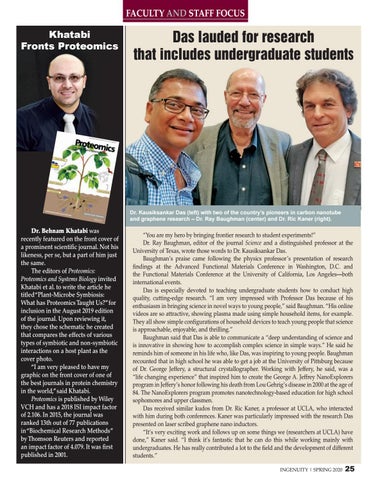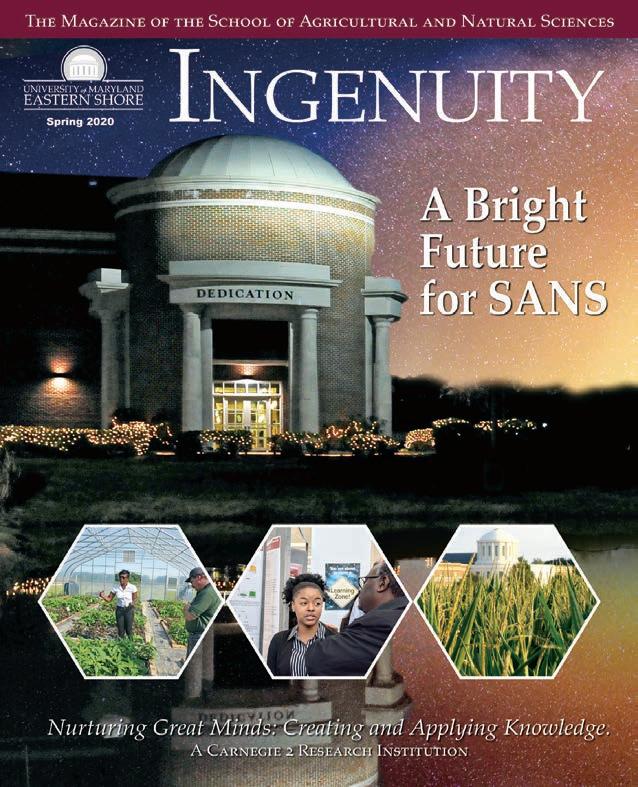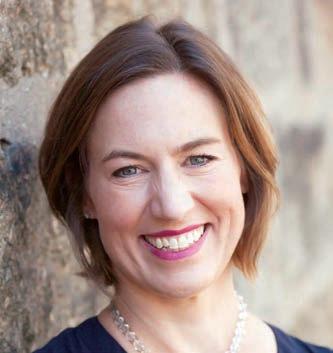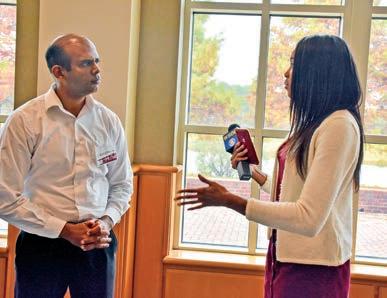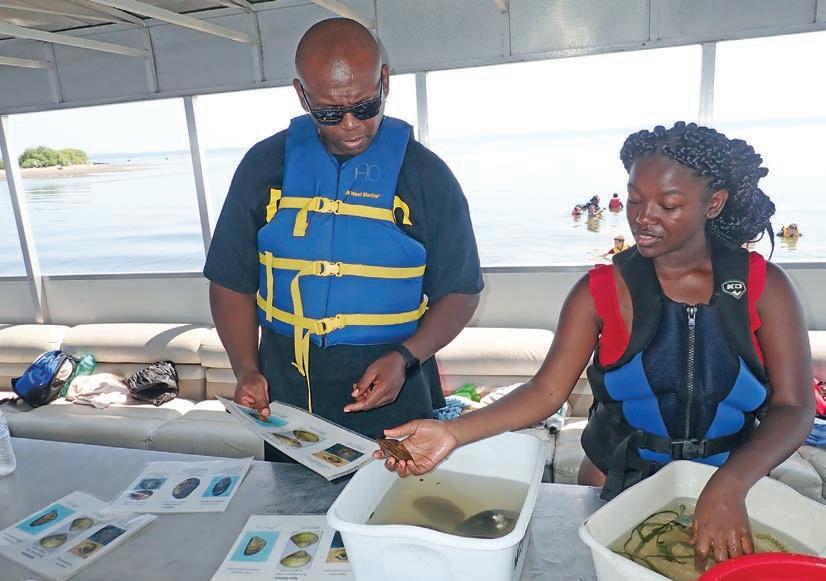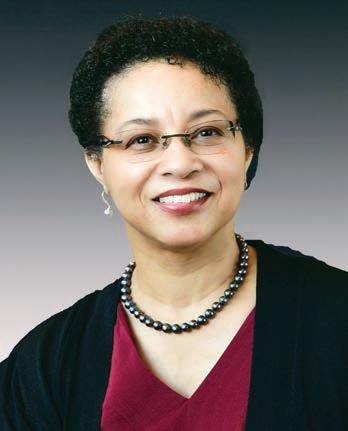FACULTY AND STAFF FOCUS Khatabi Fronts Proteomics
Das lauded for research that includes undergraduate students
Dr. Kausiksankar Das (left) with two of the country’s pioneers in carbon nanotube and graphene research – Dr. Ray Baughman (center) and Dr. Ric Kaner (right).
Dr. Behnam Khatabi was recently featured on the front cover of a prominent scientific journal. Not his likeness, per se, but a part of him just the same. The editors of Proteomics: Proteomics and Systems Biology invited Khatabi et al. to write the article he titled “Plant-Microbe Symbiosis: What has Proteomics Taught Us?” for inclusion in the August 2019 edition of the journal. Upon reviewing it, they chose the schematic he created that compares the effects of various types of symbiotic and non-symbiotic interactions on a host plant as the cover photo. “I am very pleased to have my graphic on the front cover of one of the best journals in protein chemistry in the world,” said Khatabi. Proteomics is published by Wiley VCH and has a 2018 ISI impact factor of 2.106. In 2015, the journal was ranked 13th out of 77 publications in “Biochemical Research Methods” by Thomson Reuters and reported an impact factor of 4.079. It was first published in 2001.
“You are my hero by bringing frontier research to student experiments!” Dr. Ray Baughman, editor of the journal Science and a distinguished professor at the University of Texas, wrote those words to Dr. Kausiksankar Das. Baughman’s praise came following the physics professor’s presentation of research findings at the Advanced Functional Materials Conference in Washington, D.C. and the Functional Materials Conference at the University of California, Los Angeles—both international events. Das is especially devoted to teaching undergraduate students how to conduct high quality, cutting-edge research. “I am very impressed with Professor Das because of his enthusiasm in bringing science in novel ways to young people,” said Baughman. “His online videos are so attractive, showing plasma made using simple household items, for example. They all show simple configurations of household devices to teach young people that science is approachable, enjoyable, and thrilling.” Baughman said that Das is able to communicate a “deep understanding of science and is innovative in showing how to accomplish complex science in simple ways.” He said he reminds him of someone in his life who, like Das, was inspiring to young people. Baughman recounted that in high school he was able to get a job at the University of Pittsburg because of Dr. George Jeffery, a structural crystallographer. Working with Jeffery, he said, was a “life changing experience” that inspired him to create the George A. Jeffrey NanoExplorers program in Jeffery’s honor following his death from Lou Gehrig’s disease in 2000 at the age of 84. The NanoExplorers program promotes nanotechnology-based education for high school sophomores and upper classmen. Das received similar kudos from Dr. Ric Kaner, a professor at UCLA, who interacted with him during both conferences. Kaner was particularly impressed with the research Das presented on laser scribed graphene nano inductors. “It’s very exciting work and follows up on some things we (researchers at UCLA) have done,” Kaner said. “I think it’s fantastic that he can do this while working mainly with undergraduates. He has really contributed a lot to the field and the development of different students.” INGENUITY | SPRING 2020
25
